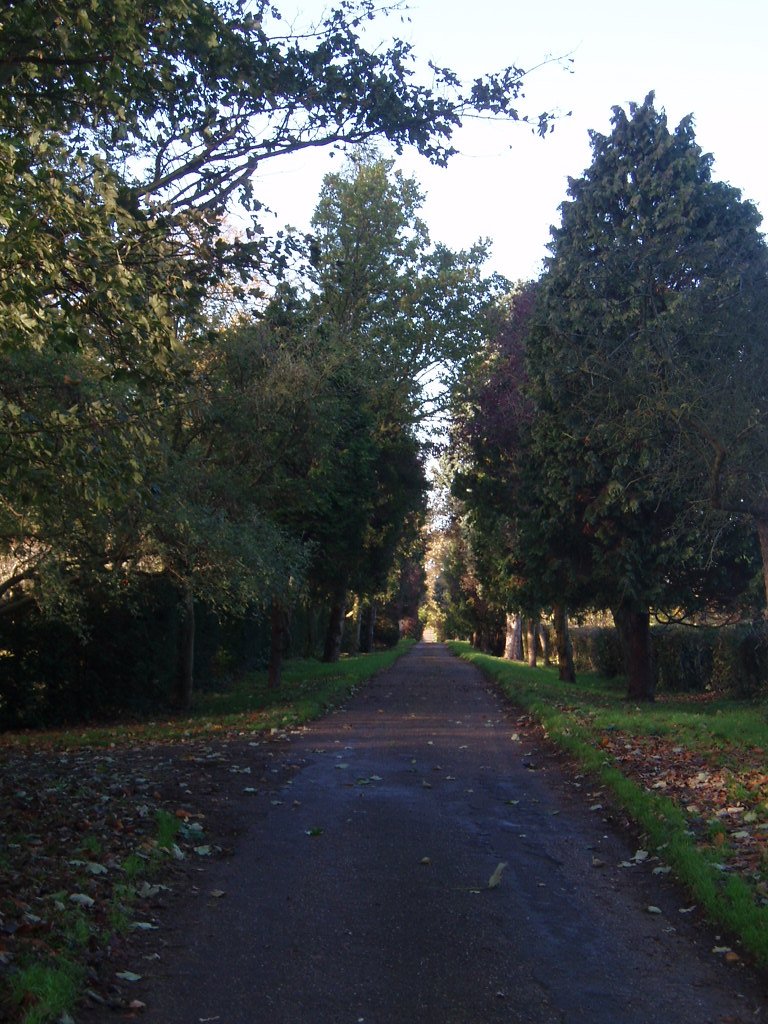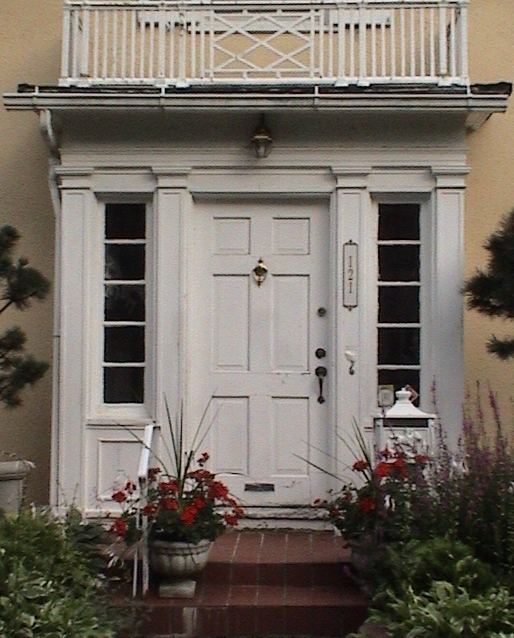|
St Andrew's Rectory, Toogoolawah
St Andrew's Rectory is a heritage-listed detached house at Mangerton Street, Toogoolawah, Somerset Region, Queensland, Australia. It was built in 1925. It was added to the Queensland Heritage Register on 21 October 1992. History This single-storeyed weatherboard house was constructed in 1925 as the rectory for St Andrew's Anglican Church in Toogoolawah. The Parish of Toogoolawah had been created in 1917, following division of the Esk parish into two, and reflected the population expansion which accompanied the success of Nestle's Toogoolawah condensed milk factory during the First World War. In 1920 Mary McConnel of Cressbrook Station, who in 1911 had donated the land on which St Andrews Church was subsequently erected, gave the parish a further two allotments in Mangerton Street, between the Church and the St Andrew's Church Hall, on which to build a rectory. In 1924 the parish asked for plans and specifications for a rectory to be prepared by the local builders, ... [...More Info...] [...Related Items...] OR: [Wikipedia] [Google] [Baidu] |
Toogoolawah, Queensland
Toogoolawah ( ) is a rural town and locality in the Somerset Region, Queensland, Australia. In the , Toogoolawah had a population of 1,279 people. Geography Toogoolawah is in South East Queensland. Toogoolawah is a centre for gliding and parachuting and in the past the centre of a dairying industry. Cressbrook Creek, a tributary of the Brisbane River, passes through the town as does the Brisbane Valley Highway. Naming The district was originally known as ''Cressbrook'' after the Cressbrook Station operated by James Henry McConnel. The town took its present name ''Toogoolawah'' from its former railway station, which was named in November 1903 using the name ''Tugulawah'' proposed by McConnel, the name of the McConnel's residence at Bulimba, Brisbane (now known as Bulimba House). McConnel had originally suggested the name ''Bakewell'' after a village in Derbyshire, for the new town and railway station, but the Queensland Railways Department wanted to use an Aboriginal name. T ... [...More Info...] [...Related Items...] OR: [Wikipedia] [Google] [Baidu] |
Toogoolawah War Memorial
Toogoolawah War Memorial is a heritage-listed memorial within McConnel Park at Cressbrook Street, Toogoolawah, Somerset Region, Queensland, Australia. The park was built by Frank Williams & Co. It is also known as McConnel Park. It was added to the Queensland Heritage Register on 21 October 1992. History The site was established as a public park and recreational facility c.1906, on land donated by James Henry McConnel of Cressbrook. James' father, David Cannon McConnel, was the first European to settle in the Brisbane Valley, taking up the Cressbrook run in 1841. In the late 1890s, JH McConnel established a condensed milk factory on Cressbrook Creek, and subdivided a large part of the run into dairy farms and the township of Cressbrook Creek (later Toogoolawah). Such private town subdivisions were not unusual in Queensland; other towns originating in this manner include Beaudesert, Nambour and Childers. The McConnel family was deeply involved in the economic and social ... [...More Info...] [...Related Items...] OR: [Wikipedia] [Google] [Baidu] |
Clergy Houses In Australia
Clergy are formal leaders within established religions. Their roles and functions vary in different religious traditions, but usually involve presiding over specific rituals and teaching their religion's doctrines and practices. Some of the terms used for individual clergy are clergyman, clergywoman, clergyperson, churchman, and cleric, while clerk in holy orders has a long history but is rarely used. In Christianity, the specific names and roles of the clergy vary by denomination and there is a wide range of formal and informal clergy positions, including deacons, elders, priests, bishops, preachers, pastors, presbyters, ministers, and the pope. In Islam, a religious leader is often known formally or informally as an imam, caliph, qadi, mufti, mullah, muezzin, or ayatollah. In the Jewish tradition, a religious leader is often a rabbi (teacher) or hazzan (cantor). Etymology The word ''cleric'' comes from the ecclesiastical Latin ''Clericus'', for thos ... [...More Info...] [...Related Items...] OR: [Wikipedia] [Google] [Baidu] |
Houses In Queensland
A house is a single-unit residential building. It may range in complexity from a rudimentary hut to a complex structure of wood, masonry, concrete or other material, outfitted with plumbing, electrical, and heating, ventilation, and air conditioning systems.Schoenauer, Norbert (2000). ''6,000 Years of Housing'' (rev. ed.) (New York: W.W. Norton & Company). Houses use a range of different roofing systems to keep precipitation such as rain from getting into the dwelling space. Houses may have doors or locks to secure the dwelling space and protect its inhabitants and contents from burglars or other trespassers. Most conventional modern houses in Western cultures will contain one or more bedrooms and bathrooms, a kitchen or cooking area, and a living room. A house may have a separate dining room, or the eating area may be integrated into another room. Some large houses in North America have a recreation room. In traditional agriculture-oriented societies, domestic animals ... [...More Info...] [...Related Items...] OR: [Wikipedia] [Google] [Baidu] |
Toogoolawah
Toogoolawah ( ) is a rural town and locality in the Somerset Region, Queensland, Australia. In the , Toogoolawah had a population of 1,279 people. Geography Toogoolawah is in South East Queensland. Toogoolawah is a centre for gliding and parachuting and in the past the centre of a dairying industry. Cressbrook Creek, a tributary of the Brisbane River, passes through the town as does the Brisbane Valley Highway. Naming The district was originally known as ''Cressbrook'' after the Cressbrook Station operated by James Henry McConnel. The town took its present name ''Toogoolawah'' from its former railway station, which was named in November 1903 using the name ''Tugulawah'' proposed by McConnel, the name of the McConnel's residence at Bulimba, Brisbane (now known as Bulimba House). McConnel had originally suggested the name ''Bakewell'' after a village in Derbyshire, for the new town and railway station, but the Queensland Railways Department wanted to use an Aboriginal name. Too ... [...More Info...] [...Related Items...] OR: [Wikipedia] [Google] [Baidu] |
St Andrew's Church, Toogoolawah
St Andrew's Church is a heritage-listed Anglican church at 2 Mangerton Street, Toogoolawah, Somerset Region, Queensland, Australia. It was designed by Robin Dods and built from 1911 to 1912 by local builder Donald Alexander Menzies at a cost of £839. It was added to the Queensland Heritage Register on 21 October 1992. When first constructed, it featured a shingle roof, a hand carved altar and a choir stall screen and was described at the time as "a welcome advance in the church architecture of this district". The Anglican Church Chronicle reported that "The treatment is original and effective and proves that the possibilities in connection with the architecture of wooden buildings are wider in extent than is commonly supposed". History St Andrew's Church was constructed in 1911-1912 for the Anglican congregation in Toogoolawah, on land donated in 1911 by Mary Elizabeth McConnel of Cressbrook. The McConnel family were personal friends of Archbishop of Brisbane St Clair Do ... [...More Info...] [...Related Items...] OR: [Wikipedia] [Google] [Baidu] |
Driveway
A driveway (also called ''drive'' in UK English) is a type of private road for local access to one or a small group of structures, and is owned and maintained by an individual or group. Driveways rarely have traffic lights, but some that bear heavy traffic, especially those leading to commercial businesses and parks, do. Driveways may be decorative in ways that public roads cannot, because of their lighter traffic and the willingness of owners to invest in their construction. Driveways are not resurfaced, snow blown or otherwise maintained by governments. They are generally designed to conform to the architecture of connected houses or other buildings. Some of the materials that can be used for driveways include concrete, decorative brick, cobblestone, block paving, asphalt, gravel, decomposed granite, and surrounded with grass or other ground-cover plants. Driveways are commonly used as paths to private garages, carports, or houses. On large estates, a driveway may be ... [...More Info...] [...Related Items...] OR: [Wikipedia] [Google] [Baidu] |
Bracket (architecture)
A bracket is an architectural element: a structural or decorative member. It can be made of wood, stone, plaster, metal, or other media. It projects from a wall, usually to carry weight and sometimes to "...strengthen an angle". A corbel or console are types of brackets. In mechanical engineering a bracket is any intermediate component for fixing one part to another, usually larger, part. What makes a bracket a bracket is that it is intermediate between the two and fixes the one to the other. Brackets vary widely in shape, but a prototypical bracket is the L-shaped metal piece that attaches a shelf (the smaller component) to a wall (the larger component): its vertical arm is fixed to one (usually large) element, and its horizontal arm protrudes outwards and holds another (usually small) element. This shelf bracket is effectively the same as the architectural bracket: a vertical arm mounted on the wall, and a horizontal arm projecting outwards for another element to be attached o ... [...More Info...] [...Related Items...] OR: [Wikipedia] [Google] [Baidu] |
Gable
A gable is the generally triangular portion of a wall between the edges of intersecting roof pitches. The shape of the gable and how it is detailed depends on the structural system used, which reflects climate, material availability, and aesthetic concerns. The term gable wall or gable end more commonly refers to the entire wall, including the gable and the wall below it. Some types of roof do not have a gable (for example hip roofs do not). One common type of roof with gables, the gable roof, is named after its prominent gables. A parapet made of a series of curves ( Dutch gable) or horizontal steps ( crow-stepped gable) may hide the diagonal lines of the roof. Gable ends of more recent buildings are often treated in the same way as the Classic pediment form. But unlike Classical structures, which operate through trabeation, the gable ends of many buildings are actually bearing-wall structures. Gable style is also used in the design of fabric structures, with varying d ... [...More Info...] [...Related Items...] OR: [Wikipedia] [Google] [Baidu] |
Sidelight
A sidelight or sidelite in a building is a window, usually with a vertical emphasis, that flanks a door or a larger window. Sidelights are narrow, usually stationary and found immediately adjacent doorways.Barr, Peter.Illustrated Glossary, 19th Century Adrian Architecture, accessed June 17, 2009.The College Hill Historic District ", Community Partnership Center, accessed June 17, 2009. While most commonly found as supporting elements emphasizing the importance of a primary entrance, sidelights may be employed at any interior or exterior door where a visual emphasis is desired, or where additional light or visibility is needed. Design Sidelights are often found in tandem with trans ...[...More Info...] [...Related Items...] OR: [Wikipedia] [Google] [Baidu] |
Brisbane Valley
The Somerset Region is a local government area located in the West Moreton region of South East Queensland, Australia, about northwest of Brisbane and centred on the town of Esk. It was created in 2008 from a merger of the Shire of Esk and the Shire of Kilcoy. It is commonly known as the Brisbane Valley, due to the Brisbane River which courses through the region, although significant parts of the region lie outside the hydrological Brisbane Valley itself. The Esk and Kilcoy Shires were amalgamated to consolidate the water catchments for the Wivenhoe and Somerset Dams. The Local Government Reform Commission identified that the long-term future of Somerset would be as a major water catchment for the SEQ region with farming being the main economic activity within a water catchment management regime. The "planning strategy and land use policies" implemented by the Somerset Regional Council are therefore "directed this end". The Somerset Regional Council, which administers th ... [...More Info...] [...Related Items...] OR: [Wikipedia] [Google] [Baidu] |







